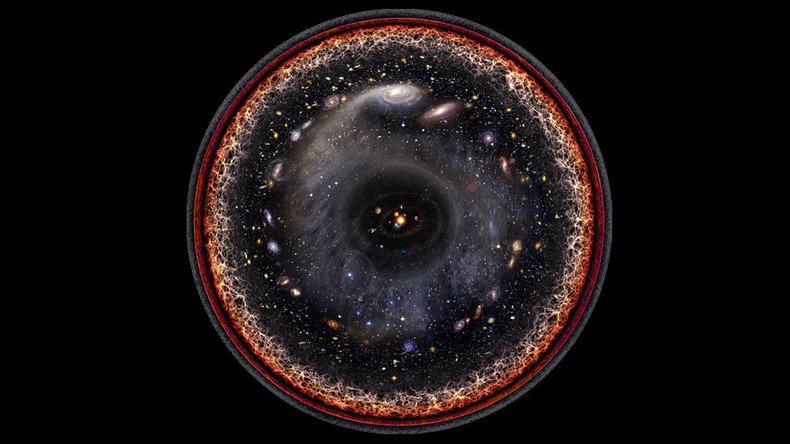Artist creates amazing map of entire universe in one image

An artist created a stunning image of the entire observable universe using NASA images based on astronomical surveys provided by Princeton University. It’s quintessentially geocentric – with Earth’s solar system at the center.
The South American artist and musician, Pablo Carlos Budassi, captured in his universe map the outer rings of the Milky Way, the neighboring Andromeda galaxy and other star formations, then encircled these star clusters with a ring of plasma left over from the Big Bang.
Logarithmic map of the #universe by Pablo Carlos Budassi pic.twitter.com/THdC0jmkC4
— Zachariah Arneil (@ZachArneil) January 6, 2016Budassi told Tech Insider that he got the idea after making hexaflexagons for his son's birthday one year. Hexaflexagons are flat paper models that can be folded in certain ways to reveal faces besides the six that were originally on the back and front.
"I started drawing central views of the cosmos and the solar system," Budassi told Tech Insider in an email. "That day the idea of a logarithmic view came and in the next days I was able to [assemble] it.”
With photoshop, Budassi used images from NASA based on observations made by their telescopes and roving spacecraft, and some textures created by himself. In the center of the image is the glowing sun, then each planet is placed where it is in the Solar System.
NASA unveils its top 15 Earth images from this year (PHOTOS)
https://t.co/iyYmYXRqUnpic.twitter.com/3IVYx33ox7
— RT America (@RT_America) December 29, 2015The most famous map projection is the Mercator projection, which shows the Earth’s surface and was presented by Gerardus Mercator in 1569. The obstacle for astronomers trying to show a map of the universe was how to confront the challenge of a wide variety of scales. Logarithmic maps were one solution.
📷 micdotcom: Artist Pablo Carlos Budassi has created a massive spherical image of the entire known... https://t.co/XACOj1NiQs
— astroandphotography (@gmunozj) January 5, 2016Budassi’s map is created on a logarithmic map of the universe created by Princeton University astronomers, based on data on 3 million space objects from the Sloan Digital Sky survey. Logarithmic maps let astronomers visualize extremely large areas, as each “step” on the axes increases by a factor of 10 (or order of magnitude). The Princeton team published the maps in the Astrophysical Journal in 2005.
No guarantees: NASA delays mission to Mars over faulty instrument setback
https://t.co/g71JFaLNQcpic.twitter.com/tlGZFvUQC0
— RT America (@RT_America) December 23, 2015Budassi’s stunning image has been added to Wikimedia Commons, which Popular Mechanics said will help to make the universe “a little more comprehensible.”












